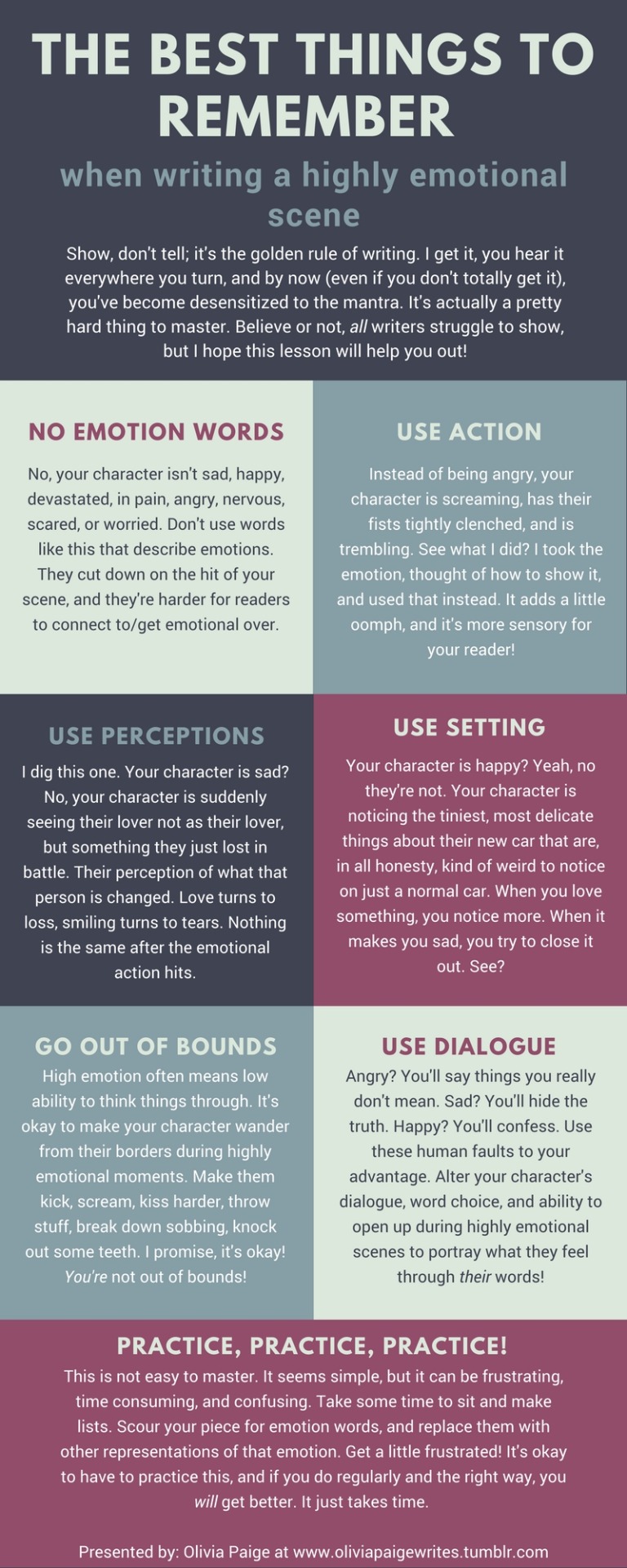Seokjin: Jungkook No
seokjin: jungkook no
jungkook: jungkook yes
namjoon: jungkook no!
jungkook: jungkook maybe
jimin *softly*: jungkook …
jungkook: jungkook no.
More Posts from Risingstarling and Others
Scene Transitions
An important part of structuring your story in any format is the transition between scenes. When not handled properly, time and/or location jumps in a narrative can become disorientating and confusing, making it harder for the audience to keep up with the action. There are three important things to focus on when transitioning between scenes: where the first scene ends, where the second scene begins, and how to connect the two.
It’s important that each scene have closure. When you leave a scene, you need to know that the goal of that scene was reached. If you leave the scene too early, before you receive that closure, your audience will be left hanging, feeling unsatisfied and off balance. You need to ‘cut away’ when the scene comes to its natural end, when everything is understood and the audience is ready to move onto the next idea. If you leave the scene too late, it drags your story, and makes it feel like the scene is longer than it is.
As with the end of a scene, the beginning of a new scene must feel natural. If you have to backtrack immediately after starting your scene in order to explain whats going on, then it means you’re not starting at the beginning of the scene. You can sometimes get away with doing this, if the reflection is placed naturally in the writing, but you shouldn’t try and push your luck. If all of your scenes start with an immediate backpedal to explain where everyone is, how they got there, and when it takes place, then you need to go back and fix some things.
Information about the change in time and location are important to include. If you didn’t, then it would be impossible for the audience to tell if, when or how these changes occurred. The most widely accepted way of transitioning between scenes is to detail the things done by the characters to go from scene A to scene B. They can do so by showing the transition between locations (“They walked the distance to the theatre, laughing the whole way”), points in time (“hours passed as she sat reading in her favorite chair”), or combinations of the two (“they drove for days, the grassy hillsides of home growing into a looming mountain range”). The information in the transition must do everything to set up the new scene that’s starting.
I am going to use a segment from “These Shallow Graves” by Jennifer Donnelly as an example of what not to do when transitioning between scenes. In chapter thirty-four, a scene is ending where the protagonist and her love interest meet secretly during a ball and make a plan for her to sneak out later that evening. The scene ends on an angsty moment as they both watch her almost arranged fiance dancing with the competitor for his affections. Chapter thirty-five immediately begins with the two of them having met up and halfway to their destination. It is then explained how the protagonist had left the party early, snuck out, and made it to the meeting point.
Feels kinda jenky huh? Here’s how we could smooth this out.
Their plan for meeting up that evening involves the protagonist telling her uncle (who an attendee) that she is feeling faint and using that as an excuse to leave the ball early. This would make more sense as a place to end the scene as it signals the beginning of the transition between locations. When she sneaks out the house is a good place to officially begin the next scene, as it signals another change in locations. Because the time spent at the protagonist’s home is not important to the overall story (her waiting for everyone to fall asleep) this could serve as the transition between the scene of the first and the scene of the second meetings. The cab ride from her house to the meeting place is also its own small transition, and is a good place to reflect on past information without interfering with anything else going on (such as dialogue and bonding between love interests).
Remember! All of the important things to keep in mind when writing scene transitions are: Know where to end a scene. Know where to begin a scene. Know how to connect the scenes.








Sasuke: KumaQui ( KumaQi熊祁)
Itachi: coser天狼
Btw Sasuke (KumaQui) was like: Itachi is beautiful ~ , and Itachi replied:”Baby brother, people are looking at your chest and your face…” ( 弟弟,他们眼里只要是在看你的胸和脸啊!!)
|太多的羁绊只会让自己迷惘,强烈的想法和珍惜的思念,只会让自己变弱 …. (这二柱子全程一脸看智障的看着鼬好嘛!!)||



On the Shelves in Oxford this week we have two books focusing on two of our favourite things- literature and happiness!
Thinking with Literature offers a new perspective for mainstream literary criticism and the value of close reading, and demonstrates viability of cognitive analysis of all kinds of literature.
Happiness Explained shows how a wide range of factors can contribute to better and happier lives and how, together, they provide a new blueprint for assessing progress in terms of personal wellbeing.
Photos by Yasmin Coonjah for Oxford University Press.
A Somewhat Useful Masterpost for Writers
Websites:
Write or Die is great if you want to give yourself a certain amount of time to write a set amount of words.
Tip of my Tongue for when you can’t remember the exact word
Character Traits Form
Online Thesaurus where you just type in a word and you get a cluster of different words
Characters
Top 10 Questions for Creating Believable Characters
How to Create a Fictional Character
Describing Clothing and Appearance
The Difference between Ethnicity and Nationality
Describing a Voice
Characters (part 2)
How to write Funeral Directors I’ve read quite a few fanfics where they just have funeral directors slapping clothes on a body and calling it a day. As a former funeral services major I can tell you that’s not the only thing they do.
How to write Drug Dealers
How to write Gamblers
Interview with a Hitman
Terms for royalty
Naming Characters
Behind the Name
Top Baby Names
Looking for a name that means a certain thing?
7 Rules of Picking Names
Most Common Surnames
Medical/Crime/Legal
Coma: Types, Causes, etc
Tips for writing blood loss
Gunshot Wound Care
Examples of Hospital Forms
Common Legal Questions
The Writer’s Forensics Blog
Brain Injury Legal Guide
Types of Surgical Operations
Types of Mental Health Problems
A Day in the Life of a Mental Hospital Patient
Global Black Market Information Because where else would you find out how much money it takes to get a 16 year old girl to kill someone in Mexico?
Crime Scene Science
Examining Mob Mentality
How Street Gangs Work
Other Helpful Stuff
Poisonous Herbs and Plants
The Psychology of Color
The Meaning behind Rose color
Compare Character Heights - I personally love this site so much.
Types of Swords
Color Symbolism
How a handgun works
Blueprints for Houses
The Six Types of Haunting Activities
The Difference Between lay and lie
10 Words You Need to Stop Misspelling
5 Easy Tips to Improve Your Writing
How to Write a Eulogy
Types of Crying
Career Masterpost
Avoiding LGBTQ Stereotypes
Tips for Writing Ghost Stories
A Spell to See Spirits
Make Graphics out of Quotes
Superstitions and More
The 12 Common Archetypes
Language of Flowers
Military Sign Language
A Visual Dictionary of Tops
Describing Tiaras
What author do you most write like? (I’ve gotten Stephenie Meyer)
12 Realistic Woman Body Shapes
Japanese honorifics
Articles
25 Steps To Edit the Unmerciful Suck out of Your Story
10 Rules for Writing First Drafts
10 Things Teenage Writers Should Know About Writing
Create a Plot Outline in 8 Easy Steps
Publishing Agencies to Stay Away From
5 Ways to Make Your Novel Helplessly Addictive
Read More

THIS IS AN IMPORTANT ONE! Don’t ignore this in your writing!








http://sevencamels.blogspot.ca/2008_12_01_archive.html
“Pick your battles. Pick… pick fewer battles than that. Put some back. That’s too many.”
— Tsuna at Hibari

Fit and Geeky Friday 💪🏽🤓 aww shucks!
The Amazing Spider-Man Workout Level I: 3 Sets Level II: 5 Sets Level III: 7 Sets 2 minute rest between sets
#massmotivefit #fitandgeeky #geekyfriday #amazingspiderman #marvel #fitness #exercise #fitfam #workingout #weightloss #training #gohardorgohome #marvelcomics #nogymnoproblem #homeworkout #superhero #geekyfriday
Neila Rey Workout Retrieved from www.neilarey.com
How to burn calories
- Eat yogurt! Studies have shown that people who ate low fat yogurt lost 70% more fat than those who didn’t.
- The more you increase the intensity in your workouts, you’ll burn more fat faster than regular aerobic exercises.
- Iron helps oxygen get to your cells and if your cells aren’t getting enough oxygen, your metabolism will start to slow down.
- Drink water! Water helps your body perform better and increases your metabolism up to 30%. The colder it is, the better it is.
- Alcohol slows down your metabolism, it’s not healthy and you should try to stay away from it.
- Drinking green tea can increase your metabolism and it helps you burn up to 60 calories a day!
—
Please message me any tips you’d like me to post
-
 nanyak26 liked this · 2 years ago
nanyak26 liked this · 2 years ago -
 ysljeons liked this · 2 years ago
ysljeons liked this · 2 years ago -
 candlefruit reblogged this · 3 years ago
candlefruit reblogged this · 3 years ago -
 cheekybuttsstuff liked this · 3 years ago
cheekybuttsstuff liked this · 3 years ago -
 candlefruit liked this · 3 years ago
candlefruit liked this · 3 years ago -
 proheroperson liked this · 3 years ago
proheroperson liked this · 3 years ago -
 bluemoonsnight liked this · 3 years ago
bluemoonsnight liked this · 3 years ago -
 louvebutter liked this · 3 years ago
louvebutter liked this · 3 years ago -
 zero0cl0ck reblogged this · 3 years ago
zero0cl0ck reblogged this · 3 years ago -
 zero0cl0ck liked this · 3 years ago
zero0cl0ck liked this · 3 years ago -
 when-day-met-the-knight liked this · 3 years ago
when-day-met-the-knight liked this · 3 years ago -
 psycho-mocha liked this · 3 years ago
psycho-mocha liked this · 3 years ago -
 billithy liked this · 3 years ago
billithy liked this · 3 years ago -
 larusmodestus liked this · 4 years ago
larusmodestus liked this · 4 years ago -
 kookminzbae reblogged this · 4 years ago
kookminzbae reblogged this · 4 years ago -
 possiblygewgaw liked this · 4 years ago
possiblygewgaw liked this · 4 years ago -
 gatitam liked this · 4 years ago
gatitam liked this · 4 years ago -
 notyouraveragesorcerer liked this · 4 years ago
notyouraveragesorcerer liked this · 4 years ago -
 claus2 liked this · 4 years ago
claus2 liked this · 4 years ago -
 jikooxluv liked this · 4 years ago
jikooxluv liked this · 4 years ago -
 ashasnms liked this · 4 years ago
ashasnms liked this · 4 years ago -
 ephiphany-201008 reblogged this · 4 years ago
ephiphany-201008 reblogged this · 4 years ago -
 strange-ephemeral liked this · 4 years ago
strange-ephemeral liked this · 4 years ago -
 fallencheezit liked this · 4 years ago
fallencheezit liked this · 4 years ago -
 susporkedyou liked this · 4 years ago
susporkedyou liked this · 4 years ago -
 remsxi liked this · 4 years ago
remsxi liked this · 4 years ago -
 winterosa liked this · 4 years ago
winterosa liked this · 4 years ago -
 goodtome109 liked this · 4 years ago
goodtome109 liked this · 4 years ago -
 hotchocofairy liked this · 4 years ago
hotchocofairy liked this · 4 years ago -
 kitinae liked this · 4 years ago
kitinae liked this · 4 years ago -
 dearwatermelonah liked this · 4 years ago
dearwatermelonah liked this · 4 years ago -
 zombiealien13 liked this · 4 years ago
zombiealien13 liked this · 4 years ago -
 m1krokosmos liked this · 4 years ago
m1krokosmos liked this · 4 years ago -
 greenllama liked this · 4 years ago
greenllama liked this · 4 years ago -
 vanessaanimefan12 liked this · 4 years ago
vanessaanimefan12 liked this · 4 years ago -
 waylandheat liked this · 4 years ago
waylandheat liked this · 4 years ago -
 serendvpitous liked this · 4 years ago
serendvpitous liked this · 4 years ago -
 automaticrascalghosthumanoid liked this · 4 years ago
automaticrascalghosthumanoid liked this · 4 years ago -
 paperbluepotter liked this · 4 years ago
paperbluepotter liked this · 4 years ago -
 fallensunglasses liked this · 4 years ago
fallensunglasses liked this · 4 years ago -
 pexxh liked this · 4 years ago
pexxh liked this · 4 years ago -
 theanonymousmurphy liked this · 4 years ago
theanonymousmurphy liked this · 4 years ago -
 huachengslastbraincell liked this · 4 years ago
huachengslastbraincell liked this · 4 years ago -
 ghaziahussainmirza liked this · 4 years ago
ghaziahussainmirza liked this · 4 years ago -
 kkcupcake360 liked this · 4 years ago
kkcupcake360 liked this · 4 years ago -
 desisea liked this · 4 years ago
desisea liked this · 4 years ago -
 drowningfeesh liked this · 4 years ago
drowningfeesh liked this · 4 years ago
Right now this is just anything that comes to mind since I'm a complete noob at tumblr. I've been hearing about it for years but I never really felt like I had anything to say. Well all that has changed now and I figured I'd see what all the hype about tumlr is really about. Anyway don't take anything I say too seriously for now...I'll probably change it later when I become more comfortable with this website.
168 posts